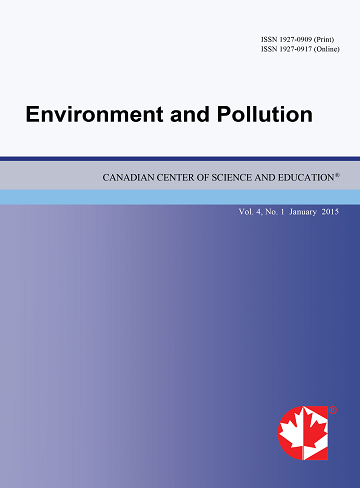Spatial Evolution of Phosphorus Fractionation in the Sediments of Rhumel River in the Northeast Algeria
- Sarah Azzouz
- Smaine Chellat
- Chahrazed Boukhalfa
- Abdeltif Amrane
Abstract
The objective of the present study is the characterization of the spatial evolution of phosphorus forms in sediments of Rhumel River located in northeast Algeria during winter conditions. Sediments samples were collected along the river in Constantine city during the year 2012. The samples were subjected to physicochemical characterization and metals analysis. Phosphorus was fractionated by sequential extractions procedure in exchangeable, oxyhydroxides bound; calcium bound; organic and residual fractions.
The distribution of the different forms of phosphorus in the sediments appears to be influenced by the physicochemical characteristics, which depend on the sampling location. Phosphorus speciation along the river is characterized by the predominance of inorganic phosphorus forms. The exchangeable fraction is the lowest. Phosphorus concentration in this fraction does not exceed 20 mg/kg. The fraction bound to calcium is the most important in retaining inorganic phosphorus with concentrations varying from 328 to 490 mg/kg. Phosphorus bound to oxyhydroxides represents an average of 172 mg/kg. Along the river, the contribution of the different fractions in the phosphorus retention follows the order: exchangeable < bound to oxyhydroxides ~ organic < bound to calcium < residual. As estimated by the sum of exchangeable, bound to oxyhydroxides and bound to organic matter, an average of about 28% of the total phosphorus can become bioavailable. The predominant fraction in the Rhumel sediments changes from residual at upstream Constantine city to bound to calcium at downstream from it.
- Full Text:
 PDF
PDF
- DOI:10.5539/ep.v3n1p51
Journal Metrics
h-index (2017): 10
i10-index (2017): 11
h5-index (2017): 9
h5-median (2017): 15
Index
- Academic Journals Database
- Berkeley Library
- CAB Abstracts
- CAS (American Chemical Society)
- CNKI Scholar
- COPAC
- CrossRef
- DTU Library
- Elektronische Zeitschriftenbibliothek (EZB)
- EuroPub Database
- Excellence in Research for Australia (ERA)
- Genamics JournalSeek
- Google Scholar
- Harvard Library
- Infotrieve
- Jisc Library Hub Discover
- JournalGuide
- JournalTOCs
- LOCKSS
- Max Planck Institutes
- Mir@bel
- PKP Open Archives Harvester
- Pollution Abstracts
- Publons
- Pubmed journal list
- ROAD
- Scilit
- SHERPA/RoMEO
- Standard Periodical Directory
- Stanford Libraries
- UCR Library
- Ulrich's
- UniCat
- Universe Digital Library
- UoS Library
- WorldCat
- Zeitschriften Daten Bank (ZDB)
Contact
- Albert JohnEditorial Assistant
- ep@ccsenet.org
